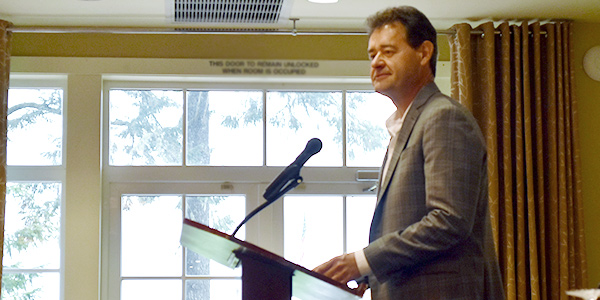By Robert Mullin
UNION, Wash. — PJM is leaving the door open to developing an organized market in the Western Interconnection, despite the downfall of its initial partner in the effort, Peak Reliability.
And some of the region’s utilities are also interested in continuing the effort, according to PJM CEO Andy Ott.
“We continue to stay interested in the West,” Ott said Monday, speaking at the Northwest & Intermountain Power Producers Coalition’s (NIPPC) annual meeting. “We’re still highly engaged — mostly not in the Northwest these days, but mostly in the Southwest.”
Ott said PJM used Peak to gain an understanding of the issues in the West and get introductions to the region’s market participants.
“But frankly, we feel we do have those introductions and we still are here and having discussions with folks,” he said.
Ott offered that regionalization is a “no-brainer” for the West, and then slipped into what sounded like a not-so-subtle pitch for having his RTO help lead the way in that effort.
“What we are about is to say, ‘Look, markets are a tool.’ Regionalization is a means to create a more efficient utilization of the grid in the West,” Ott said. “Our expertise is in coordinating markets in the East. Essentially, we did it a certain way. We realized [in the West] that it’s not the same scope. You don’t need capacity markets out here. We recognize that. Energy markets, transmission planning, regional operation, market-to-market coordination — those are the kinds of things and expertise we bring.”
Ott acknowledged that the West is already experiencing a fair volume of trading, both through the Western Energy Imbalance Market and bilateral trades. But he said those options seem to be “significantly understating” the value of ramping, flexibility, firm energy and storage — echoing the complaints of Northwest hydroelectric producers who say that CAISO and the EIM undervalue the capabilities of their highly flexible resources.
The CEO said the situation is a failure of price formation.
“Price formation is fundamentally one of the key features of an electricity market. We have to get prices so that people feel they’re being fairly treated,” Ott said. “We came in understanding that we need to get an appreciation of the special cases in the region. We tried to do that. I have folks who’ve spent a fair amount of time to understand the different drivers, because they are different from what we have” in the East.
Ott suggested that Western market participants outside California collaborate to hash out their own approach to price formation — within their own organized market — and then reach out to CAISO and ask: “‘Here’s what we think. What do you think?’
“I don’t think that conversation is happening. At least it’s not happening systematically, but I hope it will,” he said. “If we can be a catalyst to at least provide that conversation, we would love to do that.”
Ott said the idea that Western utilities must choose between developing a new market and engaging with the EIM or CAISO is “a fiction.” A “viable alternative” would be for other parts of the region to stand up a market with its own governance structure and price formation principles and then engage California through market-to-market coordination.
“It looks a lot like EIM, but it’s under different sets of rules,” Ott said. “You still have trading, and in fact you still have very efficient trading. In fact, we do this between PJM and New York; we do it between PJM and MISO. We even do it between PJM and part of the South where they don’t even have organized markets, but we have protocols.”
Clay Norris, power section manager with publicly owned Tacoma Power, asked Ott to elaborate on lack of engagement with the Pacific Northwest.
“I’ve had little interest from parties in the Northwest,” Ott said. “Most of them say, ‘We’re resigned to the fact that we’re headed in a certain direction so we really don’t have time to talk to you.’”
Ott added that Southwest utilities had previously taken the position that they must choose between working with PJM on a new market or committing to the EIM, and they focused on the latter to avoid “creating too many waves.”
“But more recently the conversation has been that [Southwest entities are saying], ‘We’re seeing some things that don’t look so good, so we want to talk to you again,’ and so they reached back out and said, ‘We’re willing to re-engage in the conversation,’” Ott said.
“We are having these conversations. Whether they go anywhere is still an open [question].”





